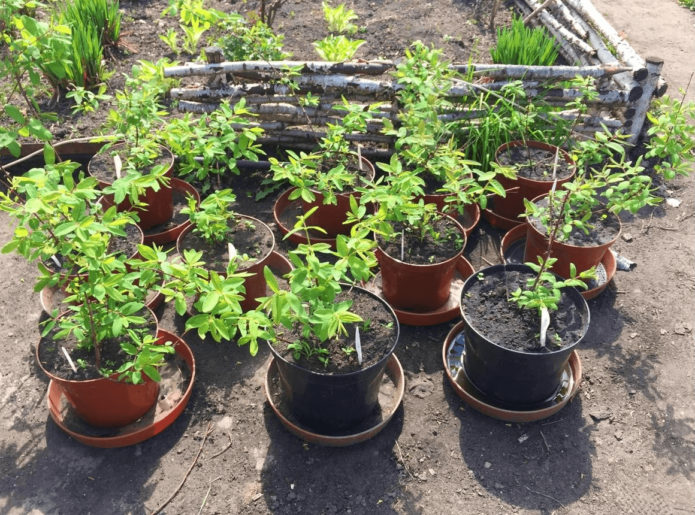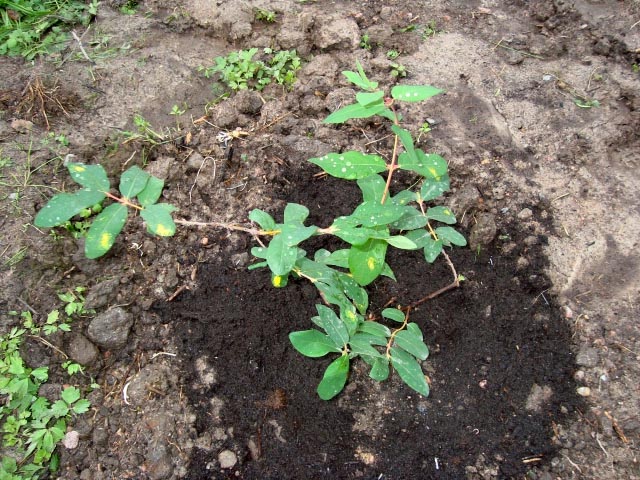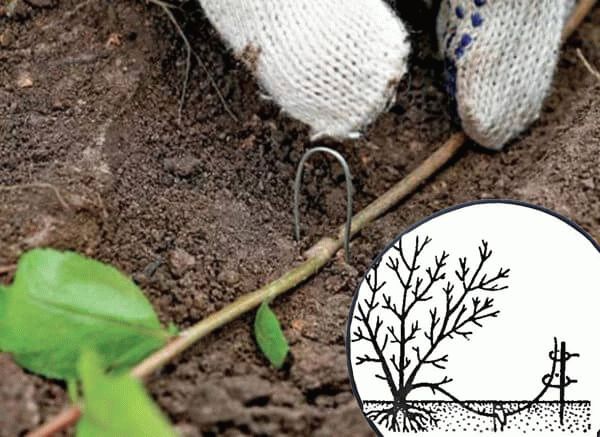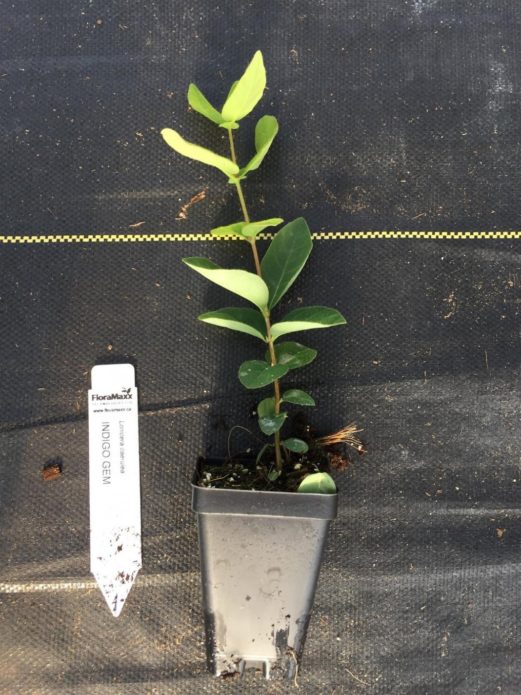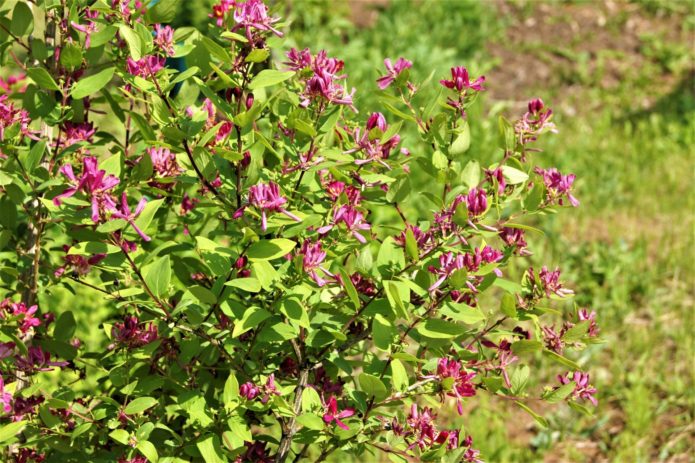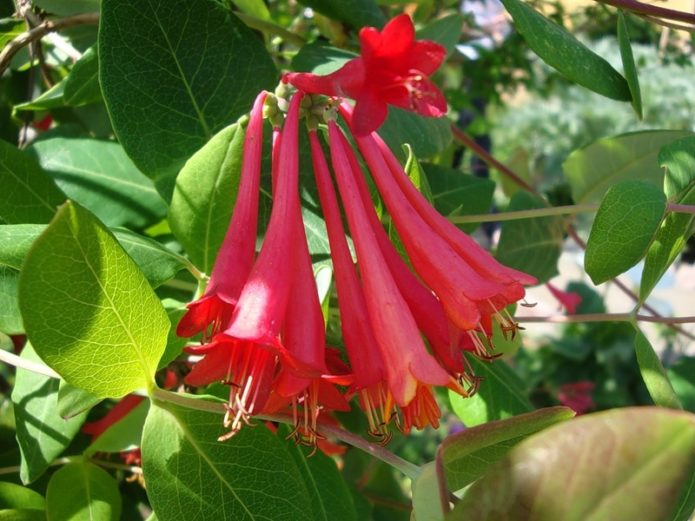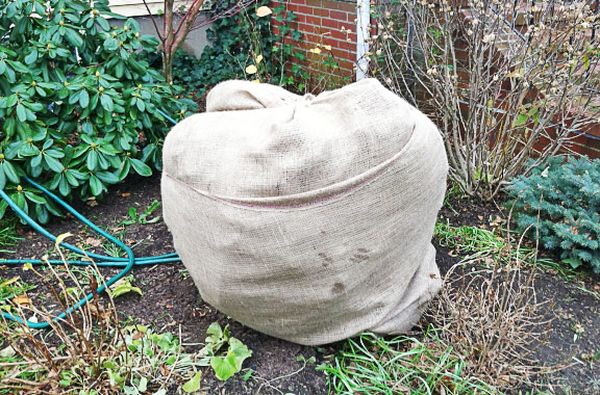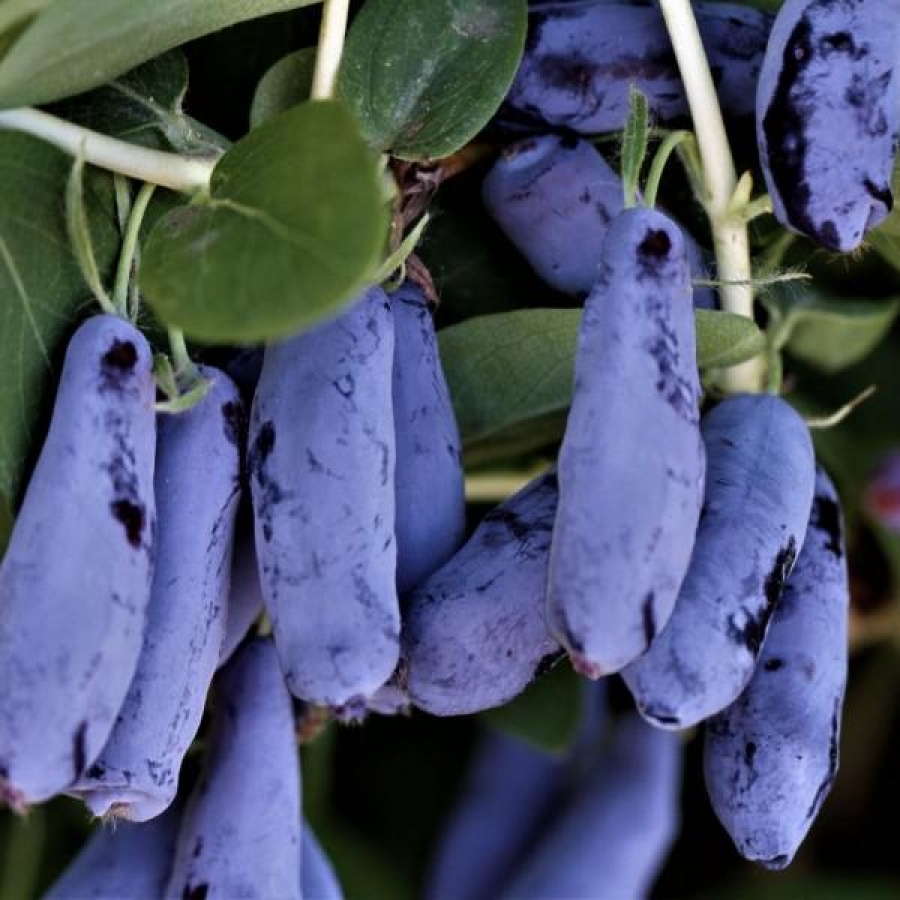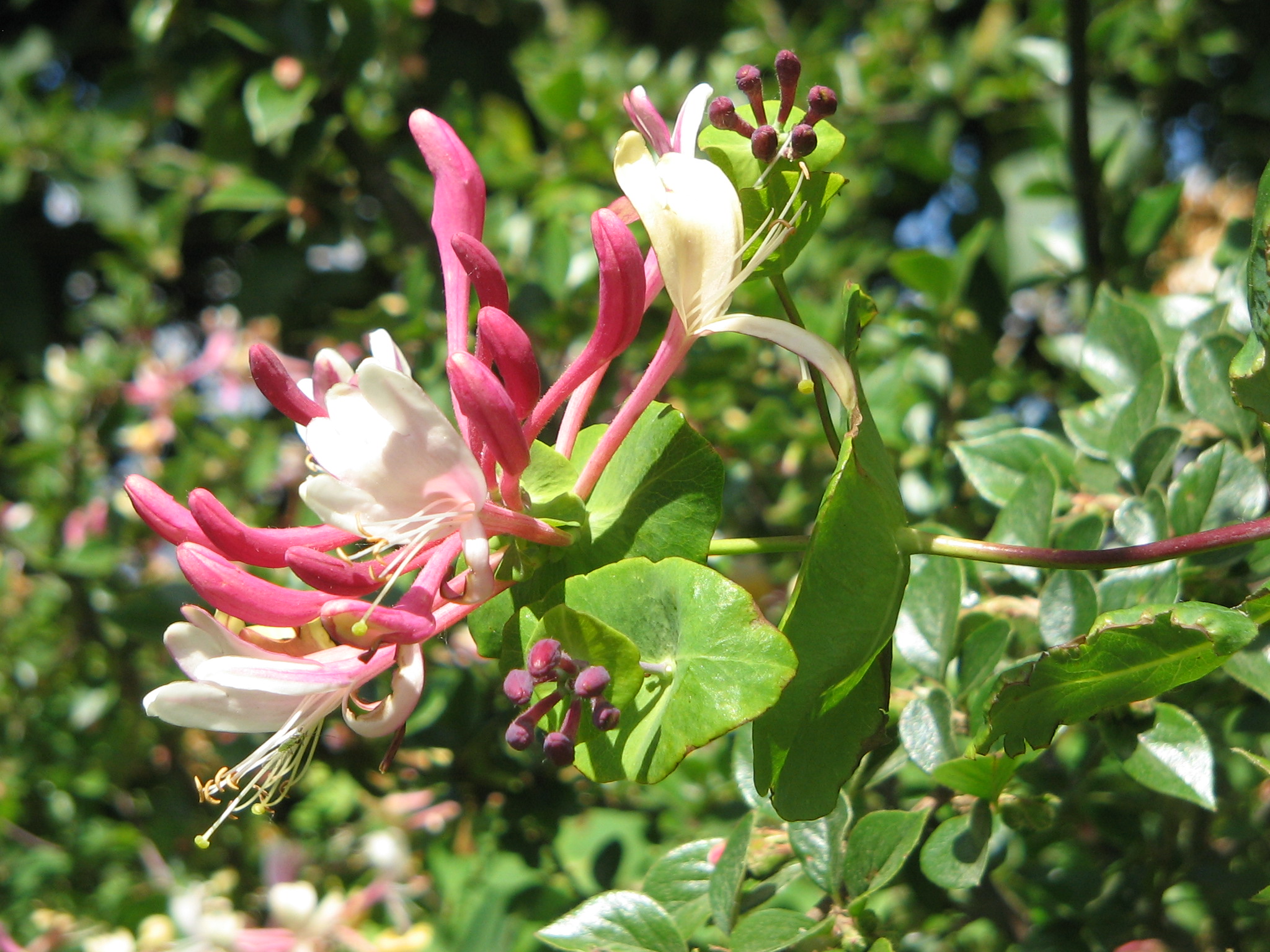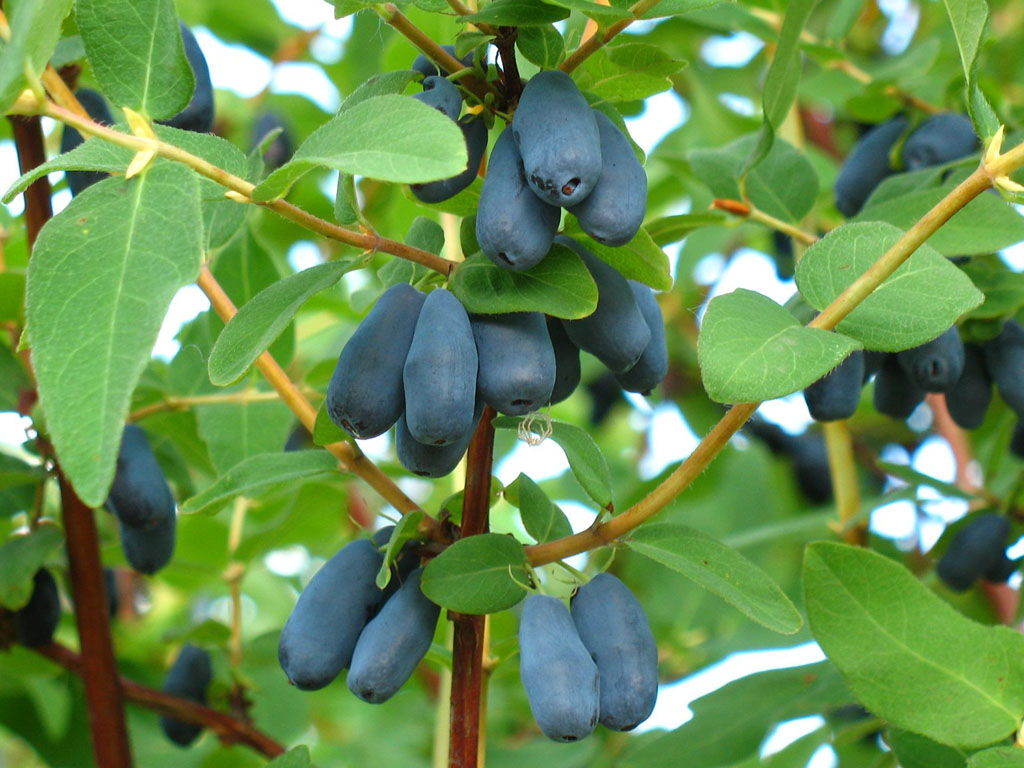There are many types of decorative honeysuckle, the most common is honeysuckle. It blooms from mid-May, is highly resistant to cold weather, but the most frost-resistant is the erect honeysuckle Tatarskaya. All types of decorative honeysuckle are extremely picturesque.
Content
Features of growing decorative curly honeysuckle
Honeysuckle is a valuable crop: its edible species bear fruit very early. But honeysuckle is not always planted for growing berries, it is good as just a flowering plant, as a decoration for a garden or hedge. For this, it is the decorative species, especially the curly ones, which primarily include honeysuckle, honeysuckle, are more suitable: it is used in landscaping much more often than others.
Purpose and characteristics of decorative honeysuckle
The most popular honeysuckle, honeysuckle, is a liana that forms shoots up to 6 meters long, which can easily climb vertical surfaces and rise to at least three meters in height. It blooms with beautiful orange-pink or crimson flowers with a strong pleasant scent. The fruits are red, beautiful, but poisonous. Very hardy and long-lived. All of this leads to the use of honeysuckle to decorate walls, arches and arbors.

Different types and varieties of honeysuckle can have flowers of different colors, but they are always extremely beautiful
Among other ornamental plants used in landscaping, honeysuckle has certain advantages:
- drought resistance;
- unpretentious cultivation;
- ease of reproduction;
- undemanding to lighting;
- rapid growth;
- flowering duration;
- resistance to diseases and pests.
Ornamental honeysuckle lives for about 50 years, some species up to a century. However, it is not very hardy (temperature around -25 aboutC is critical for her), unlike edible honeysuckle, so the regions where one or the other feels comfortable differ somewhat.
Planting decorative curly honeysuckle
Decorative curly honeysuckle loves warmth and sun, it also tolerates light shading. It will grow in the shade, but flowering there will be poor. It is able to climb up, grabbing for any obstacles, but if you plant it near a smooth wall, you need to build a trellis or make any other devices to enable the vine to rush to the sun. Usually they try to plant honeysuckle from the south side of the country house or gazebo.
From the point of view of soil quality, honeysuckle is absolutely picky: it grows on stones, and in acidic soil, and even in saline soil.Only wetlands with long stagnation of water are not suitable. The best soil is slightly acidic (with a pH of about 6). And although the liana will grow anywhere, it is better to calcify strongly acidic soils, and add high-moor peat to alkaline soils. It is advisable to pre-dig the site in order to remove the rhizomes of malicious weeds.
In recent years, they prefer to purchase seedlings in containers (with a closed root system). They can be planted almost at any time: both in spring and autumn, but spring planting (in April or May) is preferable. If honeysuckle with bare roots is planted, this should be done during a period of relative rest: in the fall after the end of leaf fall or in early spring, before the buds awaken. It is better to take two-year-old seedlings.
Planting pits for honeysuckle measuring about 50 cm in all dimensions are prepared one week before planting. When planting several bushes at the same time, the distance between the pits is 2.5–3 meters, but if you want to grow a solid wall, you can plant the bushes in a common trench a meter apart. A 10–12 cm drainage layer (crushed stone, broken brick) is placed at the bottom of the pit, and then a fertile mixture (the removed soil is mixed with a compost bucket, 50 g of superphosphate and a half-liter can of ash).
The planting process has no peculiarities. The seedling is not buried (the root collar should remain at ground level after settling the soil), the soil is well watered and mulched. In order for the plant to develop more magnificently from the first year, post-planting pruning of shoots to half the length is practiced.
Plant care
Curly honeysuckle requires minimal maintenance. In the first 1-2 months after planting, the liana needs systematic watering, and in especially hot weather, spraying the aerial part of the plant with water. Subsequently, the honeysuckle is watered as needed: if there are periodic rains, it can do without additional watering. In case of prolonged drought, it is imperative to water and loosen the soil.
If you mulch the planting site, you can do without loosening, but the weeds, especially at first, must be weeded out by hand.
2 years after planting, young honeysuckle is already beginning to feed. In the spring, you can add up to a bucket of humus to the bush, embedding it in the soil, and in the summer and autumn - wood ash (a couple of handfuls per bush). 1-2 times over the summer it will not hurt to water the plant with a solution of nitrophoska (10-15 g per bucket of water).
In conditions of high humidity, honeysuckle sometimes gets sick with powdery mildew. Spring spraying with 1% Bordeaux liquid serves as a good prevention of this ailment. In dry hot weather, spider mite and aphid attacks are possible. Dusting the soil around the bush with wood ash and lime significantly reduces the likelihood of pest infestation. Another preventive measure is spraying plants in the fall with a 5% urea solution. With the massive appearance of pests, various insecticides have to be used.
Video: growing decorative curly honeysuckle
Pruning decorative honeysuckle
Ornamental honeysuckle easily tolerates pruning, so with the help of a pruner, the bushes can be given any desired shape.
It is even possible to grow honeysuckle in a shape resembling a tree: in the liana, the shoots in the lower part are tied together, tied to a vertical support, and at the top they form a kind of crown.
Small pruning can be done at any time, but the main work is carried out after the leaves have fallen or, better, in early spring - in March, before the buds awaken. Sanitary pruning (removal of weak, dried or damaged fragments) is carried out annually, shaping (cutting out shoots growing in an undesirable direction and shortening too long) - as needed, and rejuvenating, starting from the age of six, once every three years.
The need for rejuvenation is indirectly indicated by a decline in flowering intensity.
It is in the spring, if you are not late with the deadlines, that you can not be afraid to harm the plant and carry out radical operations. So, with rejuvenating pruning, only 3-4 of the youngest shoots are left, and all the older ones are cut out at the very base. Young shoots are also greatly shortened. True, if more than half of the aboveground part of the bush is cut off at one time, it may not bloom this year as a result of stress, but it will recover over time. Therefore, rejuvenating pruning is best done gradually.
In addition to cutting out the shoots entirely and shortening them, it is practiced to remove the ovaries after flowering. The fruits of the honeysuckle are inedible, but they are often left untouched, as they give the bushes a certain charm. If you cut off the fruits, the honeysuckle becomes more branched, but you need to know when to stop and avoid excessive thickening.
Video: trimming honeysuckle
How to propagate decorative honeysuckle
The main methods of breeding decorative honeysuckle are the same as in the case of most shrubs, but most often it is propagated by cuttings and layering. Reproduction by seeds is also possible (interesting, but time consuming).
Reproduction by layering
To propagate decorative honeysuckle by layering, you need a minimum of effort. In mid-June, the plant is examined and the most powerful annual shoots are selected, but those that can be easily bent to the ground. In the place intended for rooting, the cuttings are loosened or a small groove 3-4 cm deep and up to a meter long is dug. Carefully lay the shoot in the groove, pin it to the ground with wire brackets or press it with stones, sprinkle it with soil. Water well and, if the soil is prone to drying out, mulch. The tip of the shoot starts up on any obstacle: it will continue to grow.
All summer the cuttings are watered so that the soil remains moderately moist all the time. By the fall, a small bush should grow from each buried bud. The pinned shoot is unlocked next spring, cut into sections and the young bushes grown for a year are planted.
Seed propagation
Seeds of most shrubs are propagated mainly by breeders, since this is one of the ways to obtain new varieties. In amateur gardening, seed propagation of honeysuckle is rarely carried out. Harvesting fruits for seed extraction is carried out as they ripen, usually in August or September. The seeds are washed, dried and stored until the end of winter in dry paper bags.
At the end of January, they begin stratification: the seeds are placed in wet sand and kept in the refrigerator for two months, periodically checking and sprinkling with water. In April, they are sown in boxes or immediately on a special small bed to a depth of 2 cm. Seeds sprout slowly, and seedlings grow slowly. Plant care - watering and loosening. Young seedlings are planted in a permanent place after two years.
Propagation by cuttings
Propagation by cuttings is one of the most popular methods of propagation of garden shrubs. It is much easier to work with lignified cuttings than with green ones. They are cut from the middle part of annual shoots in late autumn, or early spring. The cutting length is 15–20 cm, the thickness is 6–8 mm. In spring, they are planted in loose, moist soil so that one bud is at ground level, the other is higher, and one or two are below the ground. It is advisable to put a plastic bag on the handle for 2-3 weeks.
If everything is in order, the cuttings take root within a month. Caring for them consists of watering, loosening and removing weeds. The next spring, full-fledged seedlings are planted in a permanent place.
With green cuttings, the situation is more complicated: they need high moisture in both soil and air for rooting. Such cuttings are cut in the middle of summer and immediately planted in a greenhouse, but preferably after holding them in growth stimulants.On the upper bud, the leaves are left, on the middle one they are cut in half, and one - the lower one - without leaves is placed in the ground. The likelihood of success with green cuttings is high only with constant care of the school.
Features of growing different types of decorative honeysuckle in the regions
Among the types of decorative honeysuckle there are curly and erect ones. It is the curly honeysuckle that is grown much more often than others.
Erect honeysuckle
Of the upright species, Tatar honeysuckle (a dense shrub up to 4 meters in height) and Korolkov's honeysuckle (well-trimmed, used for highly decorative hedges) are more or less known. Both species are quite drought and frost-resistant and are grown in different regions, often do not require shelter for the winter, especially for the Tatar honeysuckle.
Alpine honeysuckle (shrub no more than a meter in height) is distinguished by its shade tolerance and winter hardiness, it grows for many years and can also be planted in almost any climate. Covering honeysuckle (shrub up to 3 meters high with beautiful flowers) lives up to 100 years, is not afraid of severe frosts, but requires high soil moisture.
Curly honeysuckle
Of the lianas (climbing species), it is the honeysuckle that is most widely known. In addition to it, for decorative purposes honeysuckle called "German honeysuckle" is planted, blooming with large flowers that attract bees, but it is much more thermophilic and feels good only in warm regions. A vine called Brown's honeysuckle is very picky: it can grow only on highly fertile soils, does not tolerate dry weather. Hecrotte's honeysuckle makes similar demands.
Thus, we can say that among the types of decorative curly honeysuckle, only honeysuckle is relatively unpretentious, which, due to its properties, is planted in almost all regions of our country, except for the north itself. In the northern regions, special conditions must be created for growing honeysuckle, especially carefully covering it for the winter.
The agricultural technique of decorative honeysuckle is radically different from the agricultural technique of edible honeysuckle. For the latter, the conditions of cold regions are preferable to those in the south: in heat and drought, edible honeysuckle grows poorly and bears fruit poorly. Edible honeysuckle is rarely cultivated south of Tambov or Samara, and in the Crimea and Ukraine, its cultivation has no practical value.
Ornamental honeysuckle, on the contrary, is much easier to grow in the south: there the vine does not even need to be removed from supports for the winter, and in cold regions, honeysuckle must be sheltered from frost. In the wild, honeysuckle grows in the Crimea, the Caucasus and European countries, it is even called Italian honeysuckle. As it has been growing for many decades in the Crimean forests, not knowing what winter is, so in gardens and near houses, it also feels calm in winter.
Where the temperature in winter drops below 20 degrees below zero (this is an approximate figure), honeysuckle has to be protected from frost. It grows successfully in the Moscow region, and even in the Leningrad region. Some amateurs, at risk and peril, do not cover the honeysuckle for the winter. Some varieties really tolerate frost well, but many freeze from the tops. Subsequently, they recover, but this takes time and effort. Therefore, at the end of October, in problem regions, vines are lowered from supports and covered, for example, with coniferous spruce branches or spunbond. This is especially required for young plants, in the first 2-4 years of life.
In Crimea, as in other southern regions of our country and Ukraine, honeysuckle grows well and blooms profusely.It is usually planted in spring, choosing a place according to the principle of "head in the sun, and legs in the shade", that is, where the bloom will be in the sun, and the roots are wrapped from the heat so that soil moisture does not evaporate. The Crimean climate, if not talking about the coast, is famous for its heat and dry air, so you often have to water the liana. In top dressing, they try not to overdo it with nitrogen, so that the foliage does not fill the entire vine to the detriment of flowering. Otherwise, care for honeysuckle in the region is carried out according to general rules.
Video: honeysuckle in Siberia
There are many types of decorative honeysuckle, but curly ones are especially appreciated, among which honeysuckle stands out. She decorates the walls of houses, gazebos, hedges: the liana looks great both during flowering and with red fruits. Caring for decorative honeysuckle is easy, it is grown in almost all regions.
